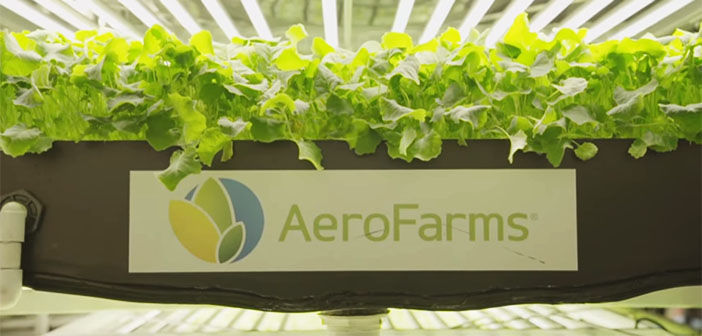Following the commercial success of their vertical farms in New Jersey, USA, AeroFarms® have announced plans to build a new 150,000 square foot indoor farm in Danville, Virginia. This new farm will be more than twice the size of their largest existing vertical farm in Newark (70,000 square feet).
“At 150,000 square feet,” David Rosenberg, Co Founder & CEO of AeroFarms said, “our new farm more than doubles the size of our last major commercial farm in New Jersey and will help us meet the strong consumer demand for safely grown produce.”
Speaking about the decision to build the new indoor farm in Danville, Fred Shanks, Chair of the Danville Pittsylvania Regional Industrial Facility Authority said “AeroFarms is a perfect example of how blending technology with agriculture can provide an environmentally responsible solution to growing nutritious food,”… “We are delighted to welcome them to this great community.”
Faster, frequent crops
Headquartered in Newark, New Jersey, and named one of the World’s Most Innovative Companies by Fast Company two years in a row, Aerofarms works by growing up (rather than flat) for fresh, fast and affordable produce. Their indoor farms, packed with multiple glowing shelves, grow more than 800 different baby leafy greens and microgreens that are fostered with special LED lights and precision plant nutrition, calibrated to the needs of each plant. This results in plants sprouting up to a third of the time faster than they do in fields.
Space and water saving
On top of that, Aerofarms take up less space than conventional farming. Grown on a reusable fabric, the nutrient rich solution that feeds them is delivered by a root misting system which uses 95% less water and no pesticides. They can farm indoors in any city, anywhere around the world. And when it comes to productivity, Aerofarms claims to be up to 390 times more productive than traditional farms (on a per acre basis)
“From seed to harvest it’s 16 days in what otherwise would take more than 30 days in the field,” Rosenberg told CBS, “and we’re able to do that 22 times a year. Whereas in the field its only three times a year because of seasonality.”
By adjusting their lights and nutrients, Rosenberg says they can also make their arugula more peppery and their kale somewhat sweeter – which for vegetable-fussy consumers is the biggest selling point of all.
Vertical farming shortfalls, according to Cornell University scientists, are that such farms need too much energy to power their artificial lights because they receive no sunlight. Some similar companies have struggled once their seed money runs dry. Aerofarms have however tweaked their LED lighting model to save energy costs. Over the past 13 years, the business has raised over fifty million dollars from the likes of Goldman Sachs and Prudential and received more than nine million dollars in state and local grants. Small wonder that Time Magazine dubbed Aerofarms one of the Best Inventions for Food & Beverage of 2019.



